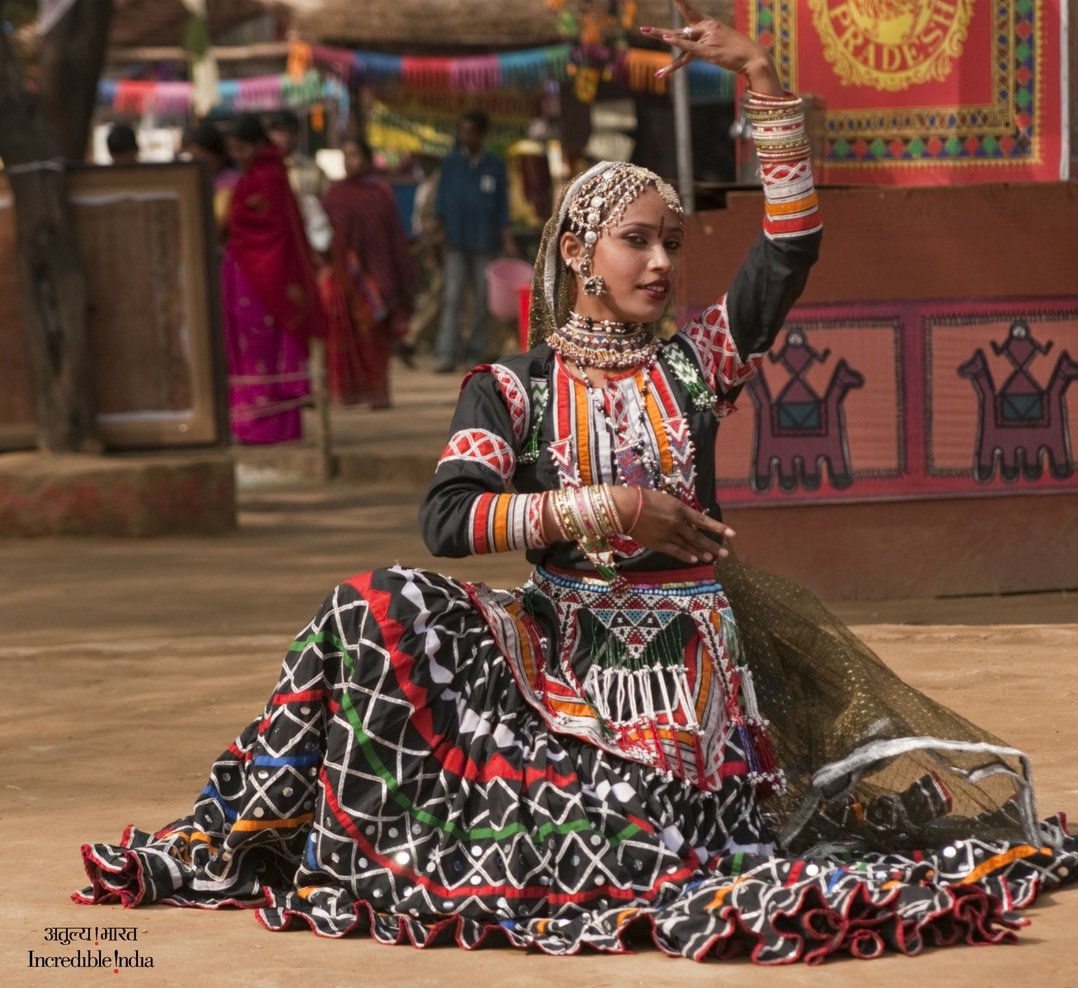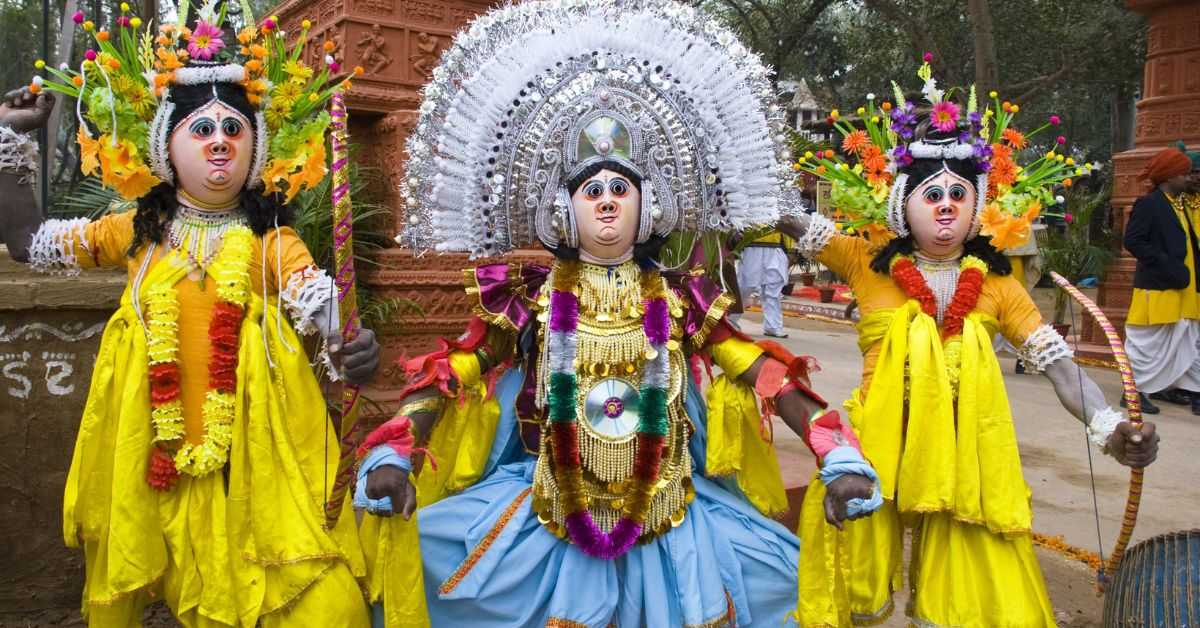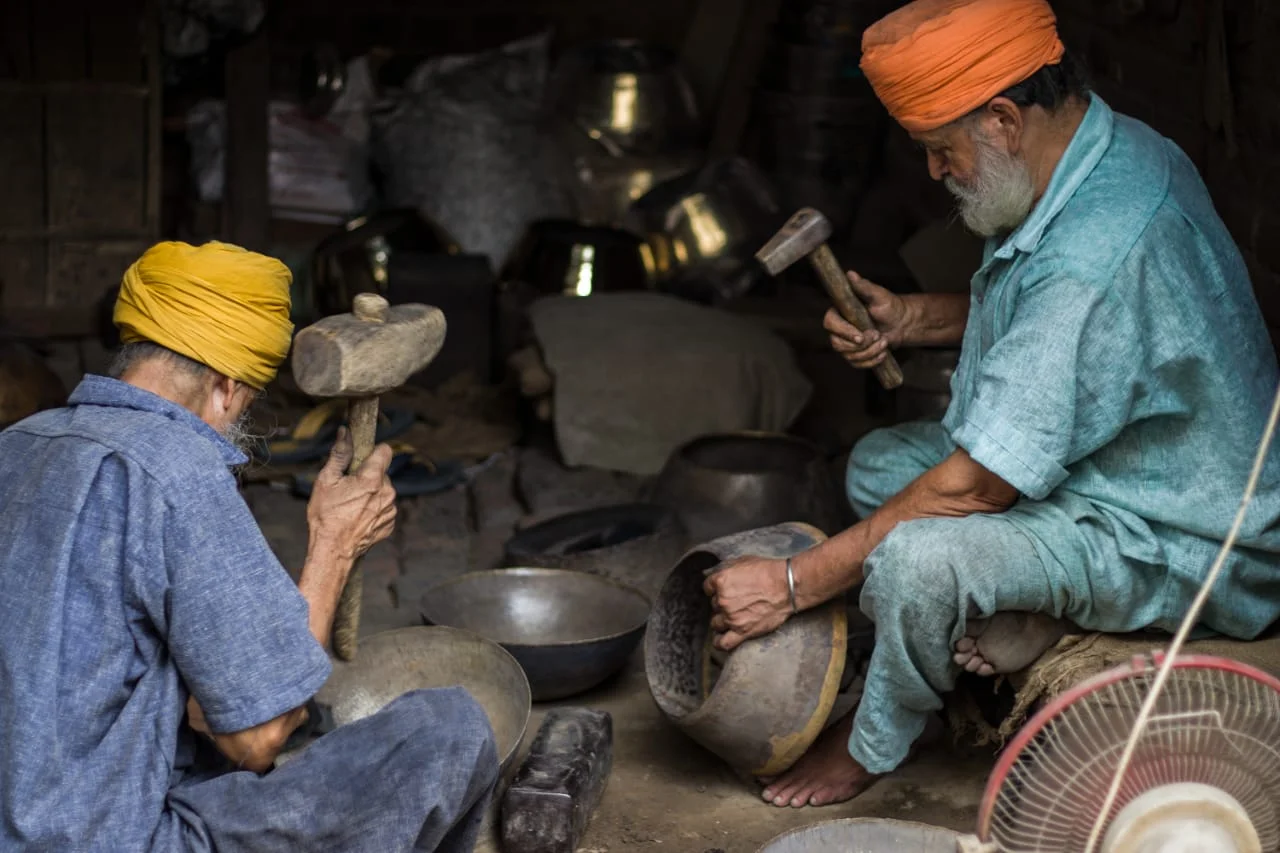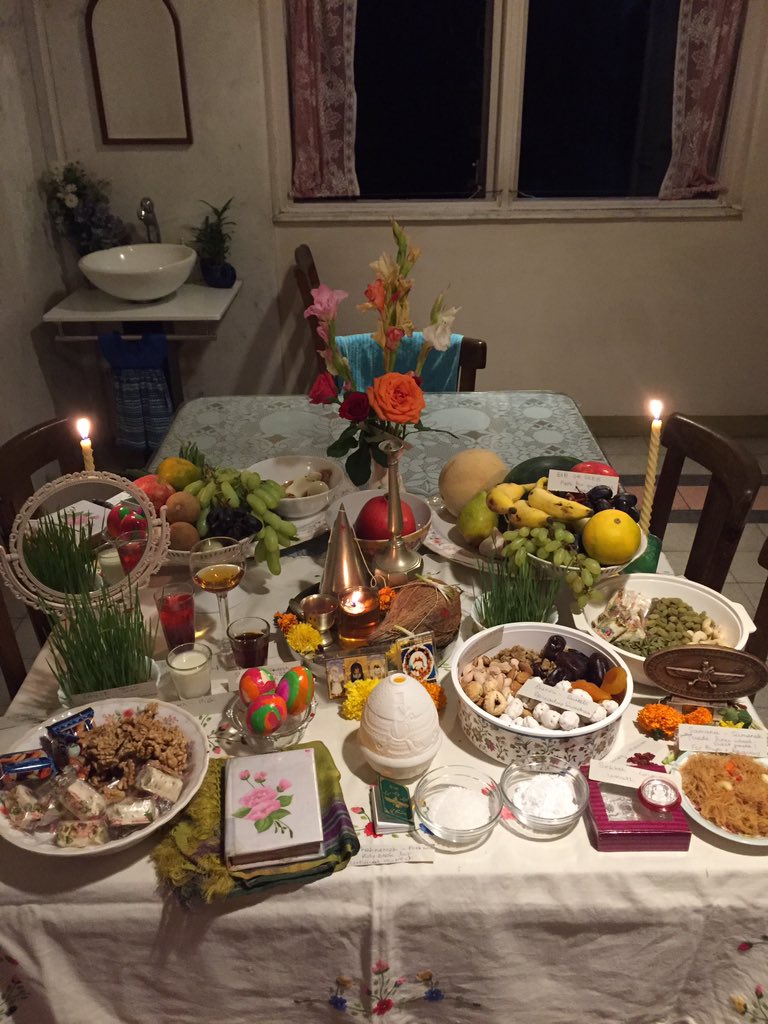Garba to Durga Puja, 15 Indian Favourites on UNESCO’s List of Intangible Cultural Heritage
Not just Gujarat's Garba and Kolkata's Durga Pujo - there are many unique cultural experiences on UNESCO's Intangible Cultural Heritage list. How many have you explored?

Anyone who has witnessed a garba performance will testify that the air is electrifying — the dancers moving in circles; their rhythmic motion characterised by sweeping actions from side to side; the folk music accompanying their clockwork steps; and the snaps, claps and twirls creating a colourful blur. The energy is almost divine.
Garba, which honours womanhood, is primarily from Gujarat but widely enjoyed all over India, especially during the nine-day festival of Navratri, which celebrates the divine feminine.
Indians have always embraced garba and now it seems the world has too!
This week, Gujarat’s garba made it to UNESCO’s list of ‘intangible cultural heritage’. As the website states, “The practitioners and bearers (of garba) are broad and inclusive, from the dancers to the musicians, social groups, craftspeople and religious figures involved in the festivities and preparations.”
However, this isn’t the first Indian cultural art form that has been given this honour. Over the years, 14 other heritage forms have made their way to the list. Here’s a glimpse at them.
1. Kutiyattam Sanskrit Theatre

One of India’s oldest living theatrical traditions, the Kutiyattam Sanskrit Theatre is believed to date back to more than 2,000 years. What is fascinating is the rigorous training that artists must undergo before being deemed eligible to become full-fledged performers.
The tradition is characterised by the dancer’s neta abhinaya (eye expression) and hasta abhinaya (the language of gestures). These gestures are said to be closely guarded secrets that belong to specific family lineages in Kerala.
2. Ramlila
The Ramacharitmanas is an epic poem composed by Indian poet Tulsidas in the 16th century, which continues to be popular to date. Ramlila is performed based on the texts mentioned in this epic. The act chronicles the battle between Lord Rama and the antagonist Ravana through a series of performances.
Ramlila is not only famous for evoking love for the epics but also for fostering a sense of brotherhood as it blurs boundaries of caste, creed and religion, encouraging all villagers to join in the preparation.
3. Kalbelia folk songs

The Kalbelia community of Thar, Rajasthan were popular for their skill in charming snakes. They were also credited for being one of the only tribes that could tame poisonous snakes. The children in this community often grew up among these venomous creatures without being hurt!
However, in modern times, the tribe’s work has become redundant. So, the community now channels their prowess into song and dance through the Kalbelia folk songs also known as the ‘Sapera Dance’ or snake dance.
The women dress in black skirts — mimicking snakes — while the men play the khanjari percussion instrument and the poongi.
4. Ramman
Centric to the state of Uttarakhand, the religious festival is celebrated with great fervour to honour the deity Bhumiyal Devta. Every year, one family in the village must take the onus of hosting the deity. This family must spend the year preparing for it with fasting and penance.
On the designated day, the entire village gathers for the celebration. Different roles are assigned during the ceremony — some lead the prayers, the young ones perform, elders supervise, and some wear sacred masks portraying Narasimha, a Hindu deity with the form of a half-man, half-lion.
5. Chhau Dance

If you happen to be in the states of Jharkhand, West Bengal or Odisha during the spring festival of Chaitra Prava, you are bound to witness this unique dance form. Usually put up at night and accompanied by the sound of drums, mohuri (reed pipes) and shehnai (a double reeded instrument), the dance features male performers who dramatise scenes from epics like Mahabharata and Ramayana.
It is said that the steps are inspired by the martial arts dance Phari Khanda Khela and thus mimic warrior actions. In fact, the name ‘chhau’ is derived from ‘chhauni’ which means military barracks.
6. Vedic chanting
Chanting the Vedas requires more than just regular skill; it demands intricate recitation methods taught to practitioners since childhood. This ensures flawless pronunciation and understanding of every word, preserving the chants for future generations. As the Vedas are the bedrock of Hinduism, this challenging practice seems appropriate.
These ‘books of knowledge’ are believed to have been composed over three centuries ago. Today, we know of them as the Rigveda — an anthology of sacred hymns, the Samaveda — musical arrangements of the hymns, the Yajurveda — a collection of prayers, and the Atharvaveda — a compilation of incantations and spells.
7. Mudiyettu

The performance comprises numerous steps and is an ode to the Goddess Bhadrakali. On the morning of the ritual dance drama, Mudiyettu performers draw an image of the deity in coloured powders on the temple floor, known as kalamezhuthu.
Kalampuja follows in which the drawing is worshipped based on the belief that the deity’s spirit is now in it. The drawing is then erased and the performers gather in avatars of the deity, the demon Darika, and other characters. As percussion instruments ring into the night silence, the performance ensues.
8. Buddhist chanting of Ladakh
The Buddhist community in Ladakh treasures peace and harmony. They chant sacred texts to seek spiritual enlightenment and sometimes use chants to ward off evil spirits or to mark auspicious occasions on the calendar.
The air brims with serenity and calm as the monasteries around the area hum in unison. It is interesting to note that the chanting is accompanied by music, vibrations, and the lamas wearing traditional clothes while making graceful hand movements called mudras.
9. Sankirtana
Often hailed as the visible manifestation of God, Sankirtana is performed to mark the various stages of the life cycle of the Vaishnava people of the Manipur plains. It is said that the art form arrived in Manipur as early as the 15th century, and the first kirtana was performed at Lord Vishnu’s temple in Vishnupur village.
The performance includes two drummers and 10 dancers enacting the deeds of Lord Krishna. The energy during the play is so holy that audience members are prohibited from entering or leaving while the performance is on.
10. Thathera craft

The numerous health benefits of using copper and brass vessels are well known. However, around 200 years ago, these were even more popular than today. It is said that the Thathera craft was established when skilled metal workers from Kashmir settled in Jandiala Guru, Punjab under the reign of Maharaja Ranjit Singh.
Since then, Jandiala Guru has become a bustling mandi (market) for brass and copper vessels. The process of making these utensils is intense and involves heating the metal to high temperatures and then moulding it into shapes. A final polish of tamarind juice is applied to each piece before they are ready for sale.
11. Yoga
The ultimate goal of yoga is the liberation of body and mind. The poses (asanas), meditation, breathing exercises (pranayama) and chanting are done in yoga work to ease physical and emotional distress in the body.
Though the practice began as a way of promoting spiritual well-being, it is now hailed as one of the best ways of achieving holistic health. There are specific asanas that are said to help with migraines, lower back pain, obesity, menopause symptoms and even chronic diseases.
12. Nawrouz

The Irani festival also called ‘Persian New Year’ is marked by a Thanksgiving lunch where the family gathers to feast and celebrate. It takes place in March and the festivities go on for around two weeks. The festival is marked by parties, gifts being exchanged between friends and family, and several community activities that strengthen solidarity among its members.
According to UNESCO, “The Spirit of Noon, known as Rapithwina, who was considered to be driven underground by the Spirit of Winter during the cold months, was welcomed back with celebrations at noon on the day of Nowruz according to Zoroastrian tradition.”
13. Kumbh Mela
The festival needs no introduction. It is celebrated four times over 12 years at four different sacred rivers — Haridwar’s Ganges River, Ujjain’s Shipra, Nashik’s Godavari, and Prayagraj’s Ganges. The festival is hailed as one of the largest peaceful congregations of pilgrims on earth and sees people of every religion flocking to it.
Legend says that the Kumbh Mela began when the gods and demons were fighting over the pot (kumbha) of the elixir of immortality (amrita). During the tussle, a few drops of elixir fell on four earthly sites turning the rivers into nectar. To this end, pilgrims bathe in these rivers to achieve immortality.
14. Durga Puja
It is safe to say that the 10-day festival is the pride of Kolkata, where it is celebrated with great fervour to mark the homecoming of Goddess Durga. Idols of the Goddess made from unfired clay are sculpted and worshipped. The first day of the Puja sees eyes being painted on the idols to ‘bring the Goddess to life’. Then on the 10th day, the idols are immersed in the river, marking the end of the festivities.
The streets of Kolkata are an eclectic mix of religion and culture on the ten days of the festival. Echoes of “Dugga Dugga” are heard on the streets as people wish each other a safe life. Meanwhile, the aroma of sweets is accompanied by that of dhunuchi (a form of incense made from the resin of sal trees).
(Edited by Pranita Bhat)
If you found our stories insightful, informative, or even just enjoyable, we invite you to consider making a voluntary payment to support the work we do at The Better India. Your contribution helps us continue producing quality content that educates, inspires, and drives positive change.
Choose one of the payment options below for your contribution-
By paying for the stories you value, you directly contribute to sustaining our efforts focused on making a difference in the world. Together, let’s ensure that impactful stories continue to be told and shared, enriching lives and communities alike.
Thank you for your support. Here are some frequently asked questions you might find helpful to know why you are contributing?


This story made me
- 97
- 121
- 89
- 167










